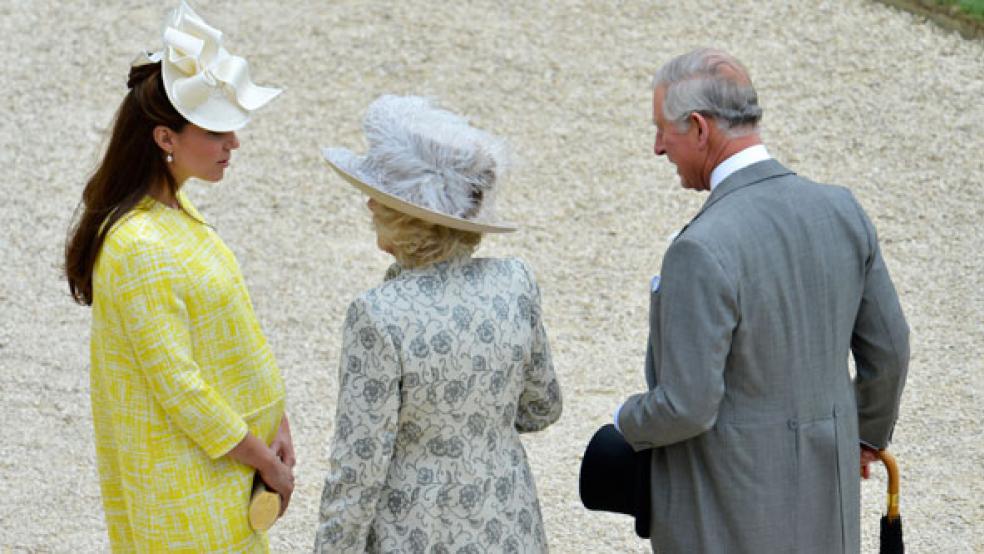The world's newest prince is less than a day old, but he is already giving back to the British people.
Economists expect U.K. consumers to spend more than £240 million ($368 million) buying party supplies as well as souvenirs and other memorabilia commemorating the royal birth.
“Any economic impact from the royal birth should be clearly positive, as there are no obvious negative economic repercussions of the happy event,” IHS economist Howard Archer said in a statement.
This outlook contrasts with the Queen’s Diamond Jubilee Celebrations last year and the Royal Wedding in 2011, when workers were given an extra day off, which negatively impacted the economy.
“There also may be a limited feel-good factor, especially as consumer confidence is currently on the rise [in the U.K.],” Archer said.
RELATED: THE POWERFUL WOMEN WHO WEAR BANGS
Some Britons are hoping to make money off the birth, with U.K. bookmakers reporting £1 million in bets associated with the prince- or princess-to-be. Bettors were wildly off, they had expected the baby would be a brunette named Alexandra, who weighed just over 7 pounds.
The private maternity wing at St. Mary’s Hospital where the Duchess of Cambridge delivered (the same one where Princess Diana gave birth to William and Harry) reportedly requires a £5,500 ($8,300) deposit—pocket change for a princess.
While the Duchess’ delivery was more posh than most, her countrywomen who give birth in more traditional digs will see far lower costs than their American counterparts.
British mums-to-be pay less than a third of what American women pay, according to a recent New York Times article.
The cost of delivering in America last year was $9,775 for a conventional delivery, versus just $2,641 in Britain. The typical cost for a caesarean section in the U.S. ran $15,041 last year, compared to $4,435 in Britain.
The cost of delivering in America last year was $9,775 for a conventional delivery, versus just $2,641 in Britain. The typical cost for a caesarean section in the U.S. ran $15,041 last year, compared to $4,435 in Britain.
RELATED: LOOKING AT KATE, SEEING DIANA
Women in the U.S. face by far the highest childbirth costs among women in developed countries. Switzerland comes in a distant second with costs of $4,035 for conventional delivery and $5,186 for a Caesarean.
Those numbers, however, represent only the typical amount paid by U.S. women with insurance, which is significantly lower than the actual cost charged to insurers. In 2010 the average amount billed to insurers was $27,866 for C-sections, and $18,329 for conventional births, according to a report by the Childbirth Connection.
That study found that the cost of maternal care in the United States increased by more than 40 percent between 2004 and 2010 for commercially insured women, and that cost was nearly 50 percent higher in some states than in others. The average payment by insurers in Louisiana for a conventional birth was $11,962, versus $21,307 in California. The largest share of those costs go to hospital or other facility costs, which comprise 59 percent of total costs in conventional births and 66 percent of costs for C-sections.
*Portions of this story appeared in this July 16 story by The Fiscal Times: Why Kate Middleton’s Maternity Costs May Be Less Than Yours





